Goddess Uzume (Ame-no-Uzume) is a Shinto Goddess who overflows with joy and is also considered the Goddess of Dance. It is said that Uzume was the one who created the Kagura dance style that continues to be danced in Japan to this day. Uzume is also considered the goddess of entertainment in general, and the goddess of actors and actresses.
Uzume has fundamental roles in two passages related to Goddess Amaterasu: 1) When she hides in a cave and decides never to leave; 2) When she sends her grandson, Ninigi, to teach rice cultivation to people of the Earth.
Watch below a video with the story of Uzume and an analysis of her archetype:
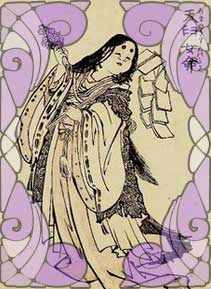
- Attributes: Goddess of dance, joy, loyalty, strength and the dawn
- Symbols: Fan, breasts, Otafuku
- Place: Japan.
After dancing in front of the cave, Uzume and her dance became traditional in ceremonies around Japan where the deeds of the Goddess are recounted.
Contents
Goddess Uzume dances to attract Amaterasu
The Goddess Uzume is responsible for filling the Amaterasu, the Sun Goddess, with curiosity and joy, causing her to leave the cave in which she was hiding. When Amaterasu decided to lock herself in a cave, leaving everything in total darkness, many attempts to bring her back were made, but none succeeded.
Tired and hopeless, the gods gathered at the entrance to the cave and placed a large copper mirror so that Amaterasu could see how beautiful and radiant she was. But how to make her, at least, look out and see herself in the mirror?
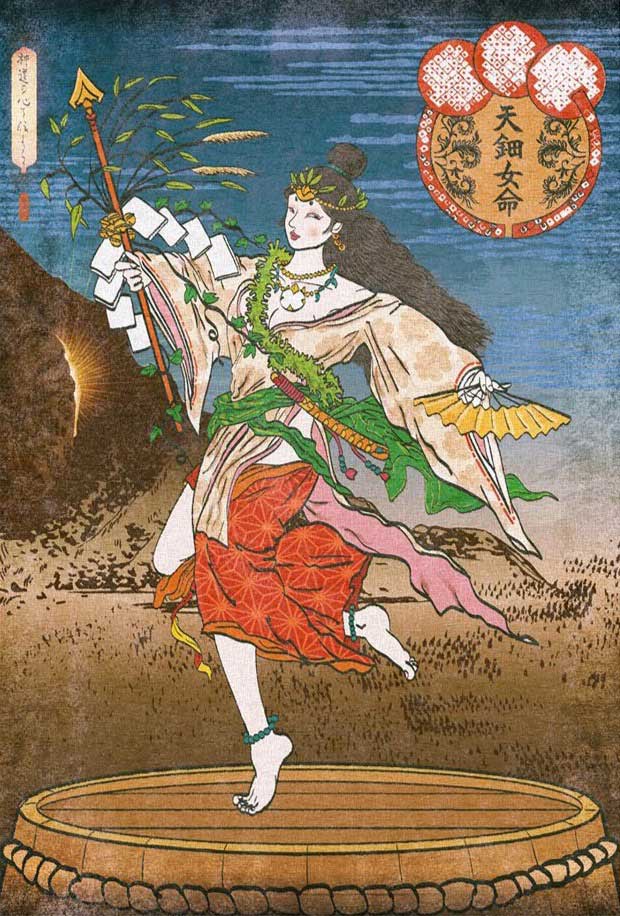
The gods who watched the dance were also filled with joy and began to laugh. All the noise drew the attention of Amaterasu, and Uzume, knowing this, recited the following verses:
“Hit futa miyo
Itsu muyu nana
Ya koko no tari
Momo chi yorodzu”.
Which means:
Gods, look at the entrance to the cave.
The Majesty appears! Rejoice!
Our hearts are happy
Look at my breasts and my limbs.
Amaterasu, curious, decided to check what was happening and, seeing herself in the mirror, was dazzled by her own beauty and light, finally deciding to leave the cave.
Goddess Uzume and God Sarutahiko guide Ninigi, grandson of Amaterasu
The other episode in which Goddess Uzume plays a key role is in which Ninigi, Amaterasu’s grandson, is sent to pacify Japan and to teach the techniques of planting rice to people. On his descent to Earth, Ninigi encountered several obstacles.
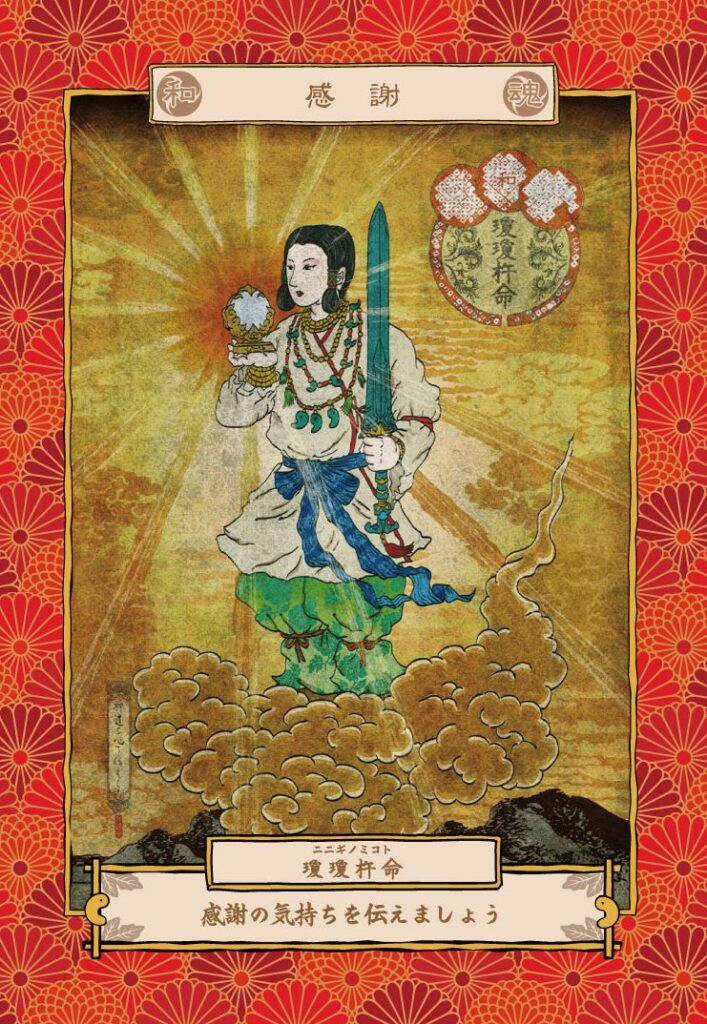
Image from “Shinto Cocoro“
One of these obstacles was dealing with Sarutahiko, the leader of the earthly Kami (Gods) and God of Trust and Overcoming. Sarutahiko blocked Ninigi’s path and would not allow him to reach Earth. Amaterasu ordered someone to deal with Sarutahiko, but no wanted to do so, for they were afraid of Sarutahiko, mainly because of his appearance. However, Uzume got ready and went to talk to him, showing her breasts and laughing.
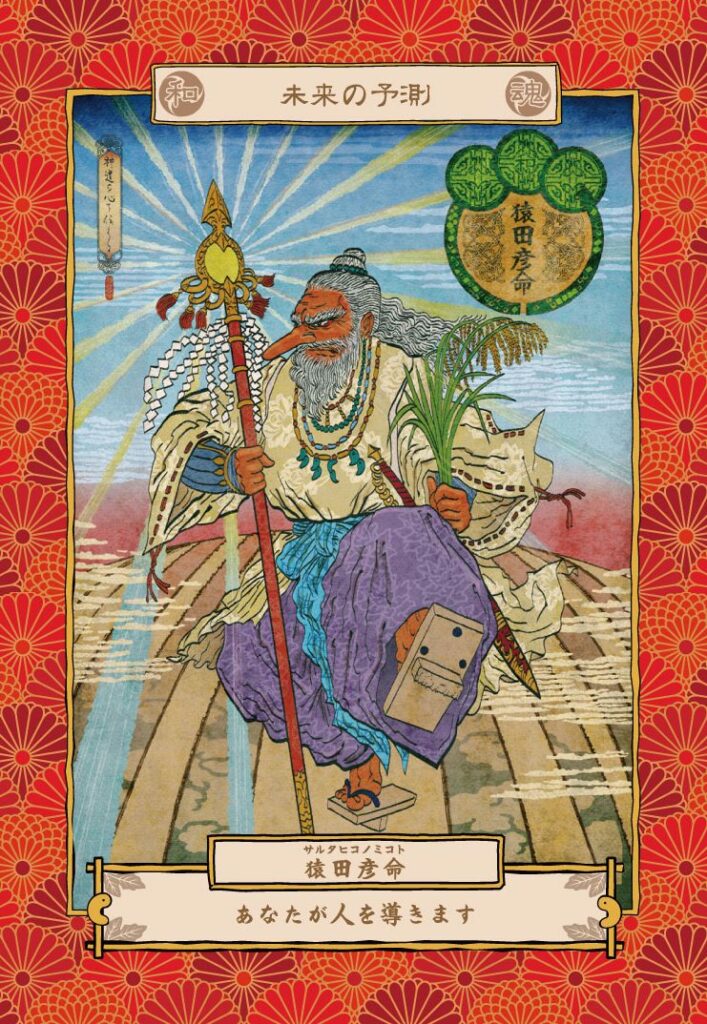
Uzume convinced him to be loyal to Ninigi and, impressed by the beauty and daring of the Goddess, Sarutahiko asked her to marry him. And she accepted! The two then guided Ninigi.
Uzume eventually became Sarume no
To learn more about Ninigi, access the post of the Goddess Konohana Sakuya, his wife.
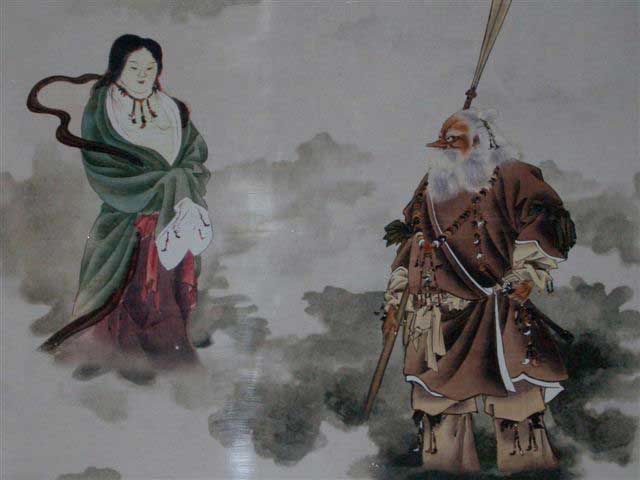
Setsubun – Spring Festival
The Setsubun festival is celebrated on February 4th, marking the farewell of winter and the arrival of spring. During the festival, the head of the family wears an Otafuku mask and shoots soybeans out of the house or into another member of the family wearing an Oni (demon) mask. During the ritual the chief says “Oni
The Otafuku mask is a very common symbol in Japan that brings joy and good luck. Commonly used in Noh theatre, it is said that the mask resembles Uzume’s face, who was always cheerful and captivating.
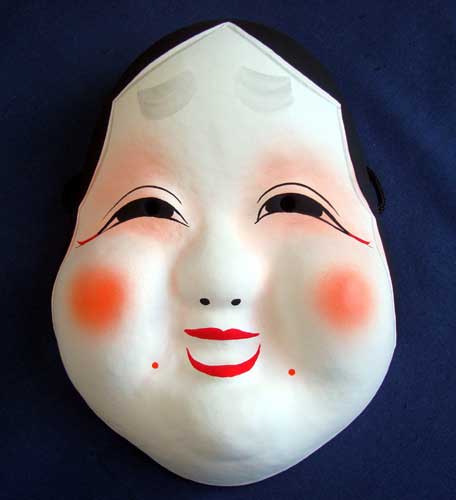
Goddess Uzume – Summoning
Do you know those days when you feel a little sad? Or those days when it seems like everything is dark, with no light to enlight the way or our ideas? DANCE!
A good way to connect with Uzume and summon her is by doing what she most liked to do: dance! Free yourself from sadness, let go of problems, dance and sing freely! You can also wear a mask of Otafuku while dancing or enact the moment when Uzume attracts Amaterasu’s attention and frees her from the darkness of the cave.
Have a good time!
Read about other Shinto Goddesses
[su_posts template=”templates/list-loop.php” posts_per_page=”0″ tax_term=”1090″ order=”asc” orderby=”title”]

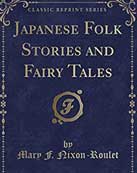
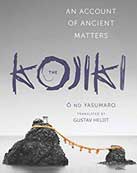

You have such a buoyant and beautiful energy. May you forever be blessed
Thank you so much, Katrina! 😀
I enjoy your blog, I hope my dyi practise will give me as much insight as yours has!!!!